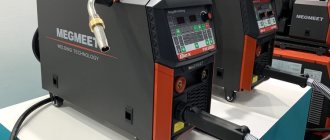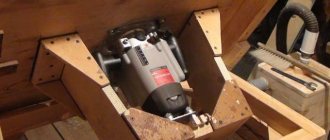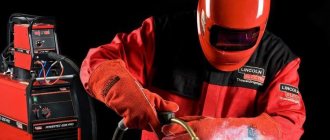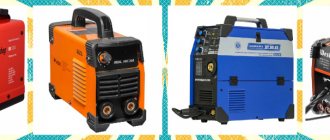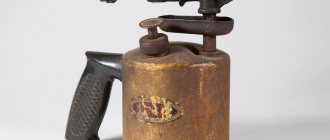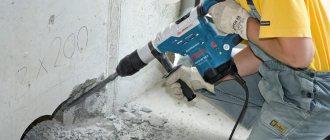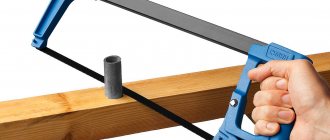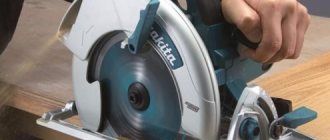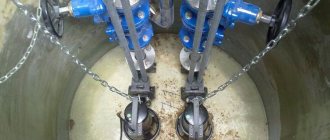Over the past few decades, the hobby of searching for antiques and relics has become very popular. The main tool in this activity is a metal detector, originally a military invention. Which model can you recommend to a beginner? Are there devices suitable for underwater searching?
What is the operating principle of this device?
You may encounter these questions when deciding to purchase a metal detector.
We have compiled a rating of the most reliable and popular devices for different skill levels in terms of price/quality ratio. The information was obtained from official sources - websites of manufacturing companies and forums with expert assessments.
We were able to identify not only the main parameters of the devices, but also create a list of their strengths and weaknesses.
Rating of the TOP 20 best metal detectors by search depth 2020-2021
| Place | Name | Price |
| TOP 4 best metal detectors by search depth by price/quality for 2021 | ||
| 1 | Minelab Vanquish 540 Pro-Pack | Find out the price |
| 2 | Garrett AT Pro + Pro-Pointer AT | Find out the price |
| 3 | Makro Multi Kruzer | Find out the price |
| 4 | Nokta&Makro Anfibio Multi | Find out the price |
| TOP 4 best metal detectors for a beginner | ||
| 1 | Minelab Vanquish 440 | Find out the price |
| 2 | Bounty Hunter Tracker IV | Find out the price |
| 3 | Minelab Go-Find 66 | Find out the price |
| 4 | Bounty Hunter Fast Tracker | Find out the price |
| TOP 4 best metal detectors with detection depth up to 1.5 meters | ||
| 1 | Minelab E-Trac (Pro package) | Find out the price |
| 2 | XP Metal Detectors ORX | Find out the price |
| 3 | Minelab Vanquish 340 | Find out the price |
| 4 | Minelab Go-Find 44 | Find out the price |
| TOP 4 best budget metal detectors | ||
| 1 | Bounty Hunter Discovery 2200 | Find out the price |
| 2 | Garrett ACE 200i | Find out the price |
| 3 | Teknetics Eurotek | Find out the price |
| 4 | Garrett ACE 150 | Find out the price |
| TOP 4 best underwater metal detectors | ||
| 1 | Nokta&Makro Simplex Plus | Find out the price |
| 2 | Makro Kruzer | Find out the price |
| 3 | Deteknix Quest Quest PRO | Find out the price |
| 4 | Garrett At Max | Find out the price |
TOP 4 best metal detectors by search depth by price/quality for 2021
Minelab Vanquish 540 Pro-Pack
One of the leaders in sales and positive customer reviews in 2021 was this ground metal detector from Minelab.
It is a professional device with good sensitivity to various non-ferrous and precious metals, and is also capable of filtering interference from foreign, unnecessary objects that are not the object of the search. Powered by four AA batteries, they last for 10 hours of autonomy.
The alert signal has different tones and is output to the built-in speaker; there is also an output for headphones, which are not included in the package and must be purchased separately.
The coil is protected from moisture, so it is suitable for searching in wet ground and can even be used in the surf on the beach. The device is very light, the rod is telescopic, extends up to 135 centimeters.
Main characteristics:
- Detection method - VLF
- Maximum depth - up to 90 cm.
- Operating frequency in kHz - from 9 to 19.
- Weight - 1.2 kg.
pros
- lightweight, extendable;
- there is moisture protection for the coil;
- good autonomy indicators;
- wide range of settings.
Minuses
- not detected.
Garrett AT Pro + Pro-Pointer AT
Representative of professional metal detectors for working in dry and wet soil, as well as under water due to the high degree of protection from moisture . Powered by four AA batteries, the charge is consumed economically, and the autonomy is maintained for up to 20 hours.
There is both automatic ground balancing and manual.
The powerful radiation of the elliptical coil allows you to search for objects located at a depth of up to three meters, without being distracted by the noise of foreign objects.
The kit includes a pinpointer that can be used when discrimination is turned off.
Sensitivity can also be adjusted to suit your needs. The sound signal is sent to the headphones that are included in the package. The comfortable armrest and light weight ensure comfortable use even after several hours of work.
Main characteristics:
- Detection method - VLF.
- The maximum depth is up to three meters.
- Operating frequency in kHz - 15.
- Weight - 1.4 kg.
pros
- good sensitivity;
- works both on land and under water;
- wide range of equipment;
- good autonomy indicators.
Minuses
- small volume control range.
Makro Multi Kruzer
A reliable hand-held metal detector that is suitable for searching for objects not only in the ground, but also under water, since the device is completely sealed.
The metal detector is self-contained thanks to its own battery, the capacity of which is sufficient to provide up to 19 hours of operation. Charging takes about six to seven hours. There is automatic ground balancing and the ability to set it manually.
Sound notification is provided through the built-in speaker and wireless headphones included in the package.
Thanks to the good radiation from the search coil, the detection depth of large objects reaches one meter, and small ones - up to 50 centimeters, which is a very good indicator for such a universal device.
Main characteristics:
- Detection method - VLF.
- The maximum depth is up to 1 meter.
- Operating frequency in kHz - 5, 14, 19.
- Weight - 1.4 kg.
pros
- own battery, saving on batteries;
- excellent protection against moisture;
- comfortable to hold in hand;
- There are headphones included.
Minuses
- the price is a little high.
Nokta&Makro Anfibio Multi
Another popular professional metal detector for ground and underwater work, with a comfortable armrest and a small screen.
Autonomy lasting up to 19 hours is provided by its own battery, which takes about six hours to charge. The package includes wireless headphones; the signal volume is not adjustable.
Due to the fact that the coil and the entire body have a high level of protection from water, which does not affect the sensitivity of the device, it shows good results on wet soil, on the coast, and under water.
The detection depth reaches one and a half meters. There is sensitivity adjustment, discrimination, automatic and manual ground balancing. The controls are quite simple, maximally adapted to the user.
Main characteristics:
- Detection method - VLF.
- The maximum depth is up to 1.5 meters.
- Operating frequency in kHz - 5, 14, 20.
- Weight - 1.7 kg.
pros
- you can install coils of different brands;
- good, high-quality assembly;
- Ideal for finding coins.
Minuses
- a bit heavy compared to similar models;
- not suitable for searching for military rarities.
The best entry-level metal detectors (up to 20 thousand rubles)
Models in the lower price category use the simplest detection methods. Characteristic features of budget detectors are a search depth not exceeding 50 cm and average discredit rates, which make it possible to distinguish ferrous metals from non-ferrous ones.
Minelab X-Terra 305 is the most functional budget model
4.9
★★★★★
editorial assessment
92%
buyers recommend this product
See review▶
A reliable device, perfectly adapted to searching for small objects, equipped with high-frequency coils. There is the ability to adjust the ground, which means that searching on difficult soils will be effective.
Detuning electrical noise allows you to work in close proximity to other metals and high-voltage power lines. And the 12-tone discrimination scale makes it much easier to exclude groups of unwanted objects.
Advantages:
- High frequency coils;
- An excellent set of functions and capabilities for this price segment;
- Precise discrimination;
- Long time of continuous operation.
Flaws:
- Weak attachment of the coil to the rod.
Minelab X-Terra will be a good choice for both a novice search engine and an experienced user. Despite its low cost, it is quite functional.
Fisher F-22 - metal detector with increased sensitivity
4.8
★★★★★
editorial assessment
89%
buyers recommend this product
See review▶
A good entry-level metal detector, equipped with an electronic detection system and automatic ground balancing.
The presence of three pre-installed programs makes it easy to search for jewelry, gold, antiques made of ferrous and non-ferrous metals.
The device also provides a fourth program - for combining user settings for volume, sensitivity and discrimination.
The display shows the depth of the object and the exception scale. The device is equipped with a speaker and a built-in headphone jack.
Advantages:
- Light weight;
- Sufficient set of functions;
- Electronic detection system;
- Ability to save custom settings.
Flaws:
- Difficulties in metal identification.
The Fisher F-22 is an excellent tool for periodically searching for coins in low mineralization soils.
Deteknix Quest Q20 – good for searching in land and water
4.8
★★★★★
editorial assessment
88%
buyers recommend this product
See review▶
An entry-level three-program metal detector is designed to search for objects made of ferrous and non-ferrous metals. It can work not only on the ground, but also in water with the coil submerged up to 3 meters.
Sophisticated software and manual adjustment of soil balance provide a high level of discrimination. And after the recent update of the model, the operating frequency of the coils has also increased.
The ergonomic design of the device is equally convenient for left-handers and right-handers. The rod here is three-sectional, and its length is adjusted with special clamps.
Nice bonuses from the manufacturer: pin-point function, built-in flashlight and wired headphones included. The metal detector is powered by a built-in battery with charging via a mini-USB interface.
Advantages:
- Housing with a high degree of moisture protection;
- Good discrimination;
- Informative display, plus sound identification;
- Effective in highly mineralized soils and sea water;
- Ability to set custom settings.
Flaws:
- There is a risk of cable breakage due to its poor location.
Quest Q20 is a universal metal detector that can be used at shallow depths, even underwater. It just requires careful handling.
Teknetics Alpha 2000 – detector with adjustable search depth
4.7
★★★★★
editorial assessment
88%
buyers recommend this product
See review▶
The entry-level model is suitable for searching for small objects made of ferrous and non-ferrous metals. The effectiveness of the device is ensured by 3 discrimination modes (All-Metal, Notch, Target ID) and 10 levels of indicating the search depth.
All information is displayed on an LCD display with two headphone jacks. The metal detector is powered by a 9-volt Kronov battery.
Advantages:
- Excellent ergonomics;
- Several discrimination modes;
- Sound three-tone indication;
- Setting the search depth;
- American assembly;
- Simple and intuitive controls.
Flaws:
- No ground balancing;
- Impressive dimensions.
In essence, the Alpha 2000 is the same Fisher metal detector, only more understandable and easier to learn, which is especially important for beginning treasure hunters.
Garrett ACE 250 – a device for beginners
4.6
★★★★★
editorial assessment
85%
buyers recommend this product
See review▶
A good ground model of a metal detector, which enjoys well-deserved popularity among novice searchers.
The main features of the device are automatic ground balancing, six operating modes and microprocessor detection technology.
An informative display, built-in speaker and headphone output will allow even a beginner to easily cope with the search.
Advantages:
- Compact size and light weight;
- Digital detection technology;
- There is an adjustment of the coil sensitivity;
- Automatic ground balancing.
Flaws:
- Low moisture protection;
- Small detection depth.
The Garrett ACE 250 is suitable only for beginner searchers who use the device as entertainment. However, it will help you understand all the features of such equipment, after which you can move on to more serious detectors.
TOP 4 best metal detectors for a beginner
Minelab Vanquish 440
One of the best representatives of ground metal detectors for a beginner, with both simple and more extensive settings.
The butterfly-shaped coil is protected from moisture, so it can be used in wet soil and on the beach, but the device cannot be immersed under water - the power supply and display are not protected from moisture.
Powered by four AA batteries, the set is enough for 8 hours of continuous searching.
In addition to reel protection, the package includes detailed instructions and a rain cover. All settings and indicators are displayed on a small screen without backlight; there is discrimination, which allows you not to be distracted by extraneous interference.
The sound signal is output to the built-in speaker, there is an output for headphones, which are purchased separately.
In addition to the original coil, you can supply others from third-party manufacturers.
Main characteristics:
- Detection method - VLF.
- The maximum depth is up to one meter.
- Operating frequency in kHz - multi-frequency.
- Weight - 1.2 kg.
pros
- good pinpointer;
- compact, quickly disassembled;
- protection of the coil from moisture.
Minuses
- not suitable for submersion;
- There is not enough backlight for the display.
Bounty Hunter Tracker IV
An American-made product that is affordable and has positive ratings from users.
An excellent option for those new to searching, since it has one, clear and effective program for detecting valuable items. It does not require a lot of time to understand the settings, without a screen, it works with a single frequency of 6.6 kHz.
There is a headphone jack, a sensitive coil (not protected from moisture), there is an automatic ground balance.
The device is very light and mobile, and the rod is a sliding type with an adjustable length from 114 to 135 centimeters.
The comfortable armrest ensures that the device fits perfectly in your hand..
The work is carried out using two 9-volt batteries, this is enough for 5-6 hours of continuous search. The detection depth of small objects ranges from 15 to 30 centimeters, large objects vary at a depth of up to 90 centimeters.
Main characteristics:
- Detection method - VLF.
- Maximum depth - 90 cm.
- Operating frequency in kHz - 6.6.
- Weight - 1.18 kg.
pros
- convenient body, light weight;
- simple settings;
- automatic ground adjustment;
- good indicator of battery operation.
Minuses
- sometimes reacts to noises from foreign objects.
Minelab Go-Find 66
A basic metal detector equipped with advanced features . Unusual coil
shape, its diameter is 25 centimeters, it is not afraid of moisture and does not need to install additional protection.
The device is quite sensitive, the detection depth reaches 80 centimeters, and it is capable of catching large objects a dozen or two deeper.
Very compact, weighing one kilogram, fits perfectly in the hand, equipped with a comfortable armrest. There is an LED indication that notifies you what metal the item was found from (red - iron, green - jewelry or non-ferrous metal). For 3-4 hours of searching you will need a set of four AA batteries.
Equipped with Bluetooth for communication with the owner's smartphone . There is special software, which, however, sometimes produces errors.
Main characteristics:
- Detection method - VFLEX.
- Maximum depth - 80 cm.
- Operating frequency in kHz - 7.8.
- Weight - 1.06 kg.
pros
- sensitive, ignores interference from foreign objects;
- lightweight, compact;
- comfortable to hold;
- not afraid of moisture.
Minuses
- body made of flimsy plastic;
- Sometimes software glitches occur.
Bounty Hunter Fast Tracker
A lightweight, compact, reliable ground metal detector that will allow you to quickly master the basics of searching for rarities in both wet and dry ground.
There is moisture protection for the coil, it works from two crowns. Sound tone, the signal is output to the speaker or through headphones, without adjusting the volume. Ground balancing is automatic only; the indicators cannot be adjusted manually.
The detection depth of large objects reaches 70 centimeters; buttons and coins can be found at a depth of up to 40 centimeters.
There is discrimination, you can balance it yourself so that the device does not react to extraneous interference from unnecessary objects.
The weight of the device with all components is 1300 grams; for ease of carrying, an ergonomic armrest is installed on the bar, which relieves the load from the shoulder and back.
Main characteristics:
- Detection method -VLF.
- Maximum depth - 70 cm.
- Operating frequency in kHz - 6.6.
- Weight - 1.3 kg.
pros
- the coil is protected from moisture;
- compact, lightweight;
- there is a headphone output;
- Suitable for wet soil.
Minuses
- no manual ground balancing.
TOP 4 best metal detectors with detection depth up to 1.5 meters
Minelab E-Trac (Pro package)
One of the best ground-type metal detectors for professionals . There is a setting
frequencies (about 28), sensitivity, ground mineralization and discrimination.
The coil has a diameter of 28 cm, is equipped with moisture protection, and has a small display on which information about the contents of the soil is displayed as a coordinate system.
The device runs on 8 AA batteries.
The metal detector is very lightweight, with a comfortable armrest and a tightly assembled body made of durable plastic.
It is possible to connect the device to a computer to exchange settings and search data with colleagues.
Thanks to wide settings and good balance, the detection depth of even small objects reaches 100 centimeters, so this device is rightfully considered a leader among ground metal detectors.
Main characteristics:
- Detection method: FBS.
- Maximum depth - 1 meter.
- Operating frequency in kHz - 1.5, 100.
- Weight - 2 kg.
pros
- reliable, high-quality assembly;
- comfortable;
- there is a noise protection mechanism;
- a large number of settings and functions;
- creates a visual picture of the soil.
Minuses
- a bit heavy;
- requires significant search experience.
XP Metal Detectors ORX
A French metal detector for professionals that meets all basic search engine requests in 2021.
Very light, weighing only 760 grams, with a telescopic rod made of molded plastic without any weights. It works with a wide range of frequencies, so it is effective in searching for both metal and precious items.
It is possible to use automatic programs specified by the manufacturer or set your own, custom ones.
The device is very sensitive, does not respond to extraneous noise from iron debris, and can be used in “cluttered” areas.
The package includes wireless headphones, the device runs on its own battery . The coil is protected from water, which allows you to search in shallow water by immersing the metal detector 1 meter under water.
Main characteristics:
- Detection method - VLF.
- Maximum depth - 1 meter.
- Operating frequency in kHz - from 13 to 59.
- Weight - 760 grams.
pros
- functionality;
- suitable for searching in soil and water;
- sensitive to precious metals;
- there are automatic settings.
Minuses
- a bit expensive
Minelab Vanquish 340
Nothing superfluous, only useful settings that will be understandable to any beginner.
Lightweight, with a molded plastic body.
The software is updated regularly. This is a ground type of metal detector, but the coil is protected from moisture and can be used on the coast (without submersion under water).
Powered by 4 AA batteries, rechargeable batteries can be used.
There are three automatic modes - coin, relic and all metals. The audio alert has four volume levels and three tone levels, and has discrimination balancing that eliminates unnecessary interference.
The device folds easily for easy transportation and is not afraid of salt water..
There is a built-in speaker, and the package also includes wired headphones with a 3.5 mm jack. The control unit is waterproof, so you can use the device even in heavy, pouring rain.
Main characteristics:
- Detection method - VLF.
- Maximum depth - 1 meter.
- Operating frequency in kHz - 6.6.
- Weight - 1.2 kg.
pros
- high degree of protection against moisture;
- three levels of tonality;
- four volume levels;
- There are automatic modes and manual settings.
Minuses
- It is not recommended to immerse completely under water.
Minelab Go-Find 44
A ground metal detector that is suitable for both beginners and experienced professionals in light areas.
Durable molded plastic construction with low weight and comfortable armrest.
Powered by four AA batteries, they last for almost 40 hours . The device is very durable and equipped with a small display, which makes it easy to customize the metal detector to suit you.
This device cannot be called sensitive, so the detection depth is only 80 centimeters.
By the way, there is also a Bluetooth module, which means you can connect to your own smartphone to gain access to advanced functionality.
The device is capable of filtering noise from foreign objects, and its price is ideal for a novice search engine.
Main characteristics:
- Detection method - VFLEX.
- Maximum depth - 80 cm.
- Operating frequency in kHz - 7.8.
- Weight - 1.06 kg.
pros
- easy;
- affordable price tag;
- convenient settings;
- can be connected to a smartphone.
Minuses
- often misses due to low sensitivity.
TOP 4 best budget metal detectors
Bounty Hunter Discovery 2200
A device that is well suited for a novice search engine due to its ease of setup and use..
For comfortable use, the manufacturer took care of a small display and alarm alerts at four tone levels. It has a mono coil with a diameter of 20 cm with a conical field.
The most effective depth for detecting objects (coins, buttons) is 15 cm, it is also capable of distinguishing such things up to 30 cm, and large objects weighing about 1000 grams will be detected at a depth of 60 cm.
The signal can be filtered without wasting time on any metal debris.
This function will definitely come in handy in places where there are a lot of things and fragments in the ground.
You can adjust the sensitivity and adjust the device to the degree of soil mineralization.
The body is well built, weighs just over one kilogram and does not weigh on your arm or shoulder.
Main characteristics:
- Detection method - VLF.
- Maximum depth - 60 cm.
- Operating frequency in kHz - 6.7.
- Weight - 1.13 kg.
pros
- quickly configured;
- distinguishes interference from objects containing unnecessary metal;
- ideal as a first device;
- affordable;
- several types of signal.
Minuses
- constant movement from side to side is necessary;
- does not work well with wet soil and is not suitable for searching in water.
Garrett ACE 200i
The ACE series, produced by this brand of metal detectors, has become an excellent option for learning to work with this type of device..
Therefore, if you are new to searching, take a closer look at the 200i model, which has proven itself well among users. The device is unpretentious, does not require a protective cover for the reel, and is easy to set up and operate.
This metal detector can be given even to a child..
Operates at low frequency and is very sensitive to copper, bronze, silver and other similar highly conductive metals.
There is a discrimination system that will allow you to conduct a targeted search for coins, buttons and other similar items.
Very economical in terms of energy consumption, one set of AA batteries will last for almost four months of regular use.
This model is an example of a good balance of price and functionality.
Main characteristics:
- Detection method - VLF.
- Maximum depth - 90.
- Operating frequency in kHz - 6.5.
- Weight - 1.27.
pros
- easy to set up and convenient to manage;
- the indicator provides clear information;
- works well in wet soil or water;
- economical energy consumption.
Minuses
- volume cannot be adjusted;
- Not a reliable coil plug.
Teknetics Eurotek
A well-assembled and balanced device for entry-level search, powered by crown.
Here, a significant drawback of the device is immediately revealed - the charge will last for no more than 8-10 hours of operation.
However, for its cost, the device has good sensitivity and is very easy to set up, while the detection depth of large objects is about 100 centimeters.
The device has only two main functions that can be configured: discrimination and sensitivity.
It performs equally well when working on dry and wet ground; it is not afraid of sand, so it can also be used on the beach. It can catch small fragments and objects at a depth of up to 30 cm.
When discrimination is turned off, the metal detector can be used as a pinpointer (static) . Keep in mind that the headphone jack is very non-standard and you will have to look for a suitable adapter.
Main characteristics:
- Detection method - VLF.
- Maximum depth - 100 cm.
- Operating frequency in kHz - 7.
- Weight - 1 kg.
pros
- reliable but lightweight design;
- easy to use;
- has high sensitivity;
- Suitable for working on the beach.
Minuses
- The signal volume is not adjustable;
- The battery drains quickly.
Garrett ACE 150
The youngest and most budget model in the line, recommended by experts as a teaching device with simple settings without unnecessary functions.
Designed for a wide range of tasks. The three-section plastic rod has an S-shape and is convenient for transportation and operation, equipped with an armrest with soft foam.
This allows the user's elbow to anchor in one place and relieve the strain on the back, which can become evident after several hours of searching..
The device can be adjusted for sensitivity and discrimination; it has automatic ground balancing, but manual ground balancing is not available. The sound is output to the built-in speaker, but there is also a headphone output.
The power supply, designed for a set of four AA batteries, is responsible for autonomy..
The charge lasts for 40 hours. The coil is protected from moisture, so searches can be carried out not only in dry ground, but also in wet ground.
Main characteristics:
- Detection method - VLF.
- Maximum depth - up to 80 cm.
- Operating frequency in kHz - 6.5.
- Weight - 1.2 kg.
pros
- simple controls;
- comfortable and lightweight body;
- protection from moisture;
- The kit includes a CD with instructions;
- It is possible to connect headphones.
Minuses
- defines copper as gold;
- no pinpointer.
Metal discrimination
So, if you want to find objects made of iron or alloys containing a significant part of it, then it makes sense to choose a metal detector based on the detection depth, because Enabling the discrimination function directly affects this indicator, and not for the better.
If the purpose of the search is non-ferrous metals (copper, bronze, silver, gold) or products made from them, then the discrimination mode is your good assistant, since it will make it possible to configure the device to exclude iron-containing objects from the detection area. And this, in turn, will allow you not to dig dozens of extra holes, which will save energy, nerves and time on your next trip.
Metal discrimination
— exclusion from the search of targets that are undesirable for detection based on their electrical conductivity.
Depending on the level of professionalism of the metal detector, the options for setting up metal discrimination change. The closer the device is to the initial level, the more simplified this process is and, which is quite logical, the adjustment itself is less accurate.
If the metal detector is equipped with a display, then it must have a visual image of the discrimination scale, which usually displays an indication of the object from 0 to 99. What does this mean? The closer the indicator is to zero, the less electrical conductivity the detected object has.
If we consider the electrical conductivity of pure metals, then the discrimination scale of the metal detector should look like this:
iron / nickel / zinc / aluminum / gold / copper / silver
This gradation is observed almost everywhere, but with a caveat - as a rule, not only the names of metals but also products made from them are indicated on the scale. This approach is completely fair considering that in most cases, for the manufacture of a particular item, be it jewelry, coins or beer caps, not purified metal, but its alloy is used. And, depending on what metal was used as an alloy (additive), the electrical conductivity of the product itself changes.
For example, zinc, nickel, platinum, and copper are added to gold jewelry, depending on the production technology. The first three metals have electrical conductivity closer to iron, i.e. even less than that of aluminum, therefore, when gold jewelry is detected, the discrimination scale will display a value between aluminum and iron, and accordingly the sound signal of the metal detector will be low.
If during the manufacturing process more copper was used than other alloys, then the signal will be higher (provided there is polyphony) and the indicator will show the presence of metal in the segment from aluminum to copper.
TOP 4 best underwater metal detectors
Nokta&Makro Simplex Plus
A reliable, high-quality metal detector with full protection from water, which is suitable for searching both in shallow and deep waters.
It has a huge number of settings, is very sensitive to various metals and produces powerful radiation, thanks to which the detection depth of objects reaches three meters.
The discriminator has 99 steps (most of which are not useful), there is a setting for soil mineralization.
Small objects are caught in the area of 50 centimeters. The coil has a diameter of 11 centimeters.
Conveniently, the rod here is extendable and can be increased to 132 cm.
The device runs on its own battery, a full charge of which is enough for almost eight hours of operation (charging will take half as much time). It is possible to purchase an additional battery separately.
Main characteristics:
- Detection method - VLF.
- The maximum depth is up to three meters.
- Operating frequency in kHz - 12.
- Weight - 1.3 kg.
pros
- high-quality assembly;
- strong radiation and high sensitivity;
- many settings;
- high-quality protection against water, can be used at depth;
- There is a pinpointer.
Minuses
- You can get confused in the settings;
- There is only one type of coil.
Makro Kruzer
This device can be used to search for relics in the ground or underwater.
Good radiation from the coil leads to a detection depth of up to one meter.
Light in weight (albeit heavier than conventional ground ones), it is convenient for transportation and operation; the package includes wireless headphones and a charger for the original battery, providing autonomy for up to 19 hours.
There is a built-in speaker with three levels of alert tone. There is vibration.
You can adjust the sensitivity or use automatic modes; there is automatic and manual ground balancing.
This is a multifunctional metal detector that will help you find coins, buttons, pellets and other interesting antiques, and also indicate precious metals.
Main characteristics:
- Detection method - VLF.
- The maximum depth is up to one meter.
- Operating frequency in kHz - 14.
- Weight - 1.4 kg.
pros
- headphones included;
- own battery;
- suitable for professionals;
- wide range of settings.
Minuses
- unreliable connection between the coil and the rod;
- sometimes it works in vain.
Deteknix Quest Quest PRO
A professional metal detector that is used to search for rarities in dry and wet soil, and can also be taken with you for diving to a depth of up to five meters.
All thanks to the high level of moisture protection of the reel and the entire body. The detection depth of large objects reaches three meters. The device is famous for its performance and high sensitivity.
Autonomous operation is ensured by its own battery, a full charge of which is enough for 30 hours of operation..
Therefore, the device is indispensable on trips and hikes. Easy to disassemble, convenient to transport. It can connect to smartphones and has a Bluetooth module for exchanging information and making maps.
It is very popular among professional search engines and is used to detect precious metals.
Main characteristics:
- Detection method - VLF.
- The maximum depth is up to three meters.
- Operating frequency in kHz - 5, 14, 20.
- Weight - 1.35 kg.
pros
- high level of autonomy;
- Can be used at a depth of up to 5 meters;
- connection to gadgets;
- sensitive, many settings;
- affordable price tag for such functionality.
Minuses
- not detected.
Garrett At Max
Universal metal detector for searching in the ground and diving under water to a depth of three meters.
It features a wide range of settings for filtering out extraneous noise, ground balancing (automatic and manual), and sensitivity.
The maximum depth for detecting objects reaches three meters . A convenient telescopic rod and a soft armrest ensure comfortable work and convenient transportation.
Autonomy is ensured by a power supply consisting of four AA batteries (rechargeable batteries are also suitable).
The charge lasts for 20 hours, which is a good indicator . The package includes branded wireless headphones, without volume control, but with three alert tone levels.
Well suited for searching for various small items made of non-ferrous or precious metals.
Main characteristics:
- Detection method - VLF.
- The maximum depth is 3 meters.
- Operating frequency in kHz - 13.6.
- Weight - 1.4 kg.
pros
- affordable price tag;
- wireless headphones included;
- good autonomy (economical consumption);
- convenient telescopic rod.
Minuses
- not detected.
Possibilities of discrimination
Typically, budget metal detectors do not have wide discrimination settings and are capable of discriminating only against non-ferrous and ferrous metals. More complex and expensive devices have the ability to cut off ferrous metal objects and small non-ferrous objects that are not the object of the search. In these devices, metal discrimination can be adjusted and additional selective settings can be set. It is possible to set a cut-off threshold for unwanted objects, taking into account the type of metal and their size. Cheaper metal detectors, instead of such regulators, use fixed operating modes for metal discrimination, for example “coin search”, “relic search”, “all metals”. Modern metal detectors are also equipped with a liquid crystal screen, which displays the characteristics of the object, for example, such as the approximate type of metal, depth, electrical conductivity and size. Using such a screen, you can visually determine the nature of your target and decide whether to excavate or not. Other, more complex metal detectors replace the LCD screen with tones. Metals with low conductivity will give low signals, metals with high conductivity will give high signals.
Object detection method
The most popular methods are those described below.:
- VLF (very low frequency) – operating frequency up to 20 kHz. The receiving and transmitting coils are placed in one unit. Having received a signal, the device shows what kind of metal was detected or whether the item belongs to garbage.
- VFLEX is an improved version of VLF , most often used by its creator, Minelab. Here, not an analog signal is processed, but a discrete one, which speeds up processing and makes it better, minimizing the number of errors.
- PI – pulse induction . Only one coil is used as a receiver and transmitter; it is most often used in models for underwater search in salt water bodies.
- FBS – full-band spectrum . Another product from Minelab. There are several frequency generators and they are used simultaneously, which allows you to obtain all the information about the found object.
Coil design
Two types of designs of this element are used:
- mono - two circles of winding, one of which is placed in the second;
- DD - two windings that are located next to each other.
Mono coils cope better with extraneous interference from unnecessary metals (discrimination). But if the search is carried out in soil with a large amount of minerals, then you should choose a metal detector with a DD coil.
In addition, other parameters cannot be ignored:
- Number of manual settings . They help adjust the operation of the device to a specific area and the task at hand.
- Tonality (number of levels). Indicates the proximity of the find.
- Ability to map finds.
- Connecting the metal detector to gadgets or a computer to exchange data and save search results.
- Autonomy . Can I use rechargeable batteries? How long does the charge last?
- Purpose . Do you need a device to search exclusively in the ground or are you planning to work in water?
These points also affect pricing, and if you manage to identify functions that are unnecessary for your purposes, you will be able to buy a device with the ideal balance of price and performance.
Talking metal detector + smart discrimination
What do you expect from a smart metal detector? The answer to the most important question of any digger of all times - To dig or not to dig? The accuracy of the answer is ensured by the discrimination function. Dozens of factors are involved. And there is no reason for a large manufacturer to delve into your problems with vodka caps and foil. Metal gives a positive response; if you don’t want to dig, then drown out the whole sector. Well, if you block the visibility of gold, you still won’t know about it, there are no finds. But there is still a difference between foil and gold. The only question is the method and accuracy of determination. The day the metal detector called you smart. Check out this masterpiece!
In fact, the key to the future of the medical industry is in the hands of simple diggers. Let's say a manufacturer has made a self-learning smart metal detector. Where will the data in the system come from? From real cops. And the more you confirm or refute the predictions of a smart metal detector, the smarter it will become. Moreover, the metal detector itself will adapt to your specifics, wiring speed, temperature, even fatigue and mood (this is not a joke). But most importantly, the metal detector learns from each hole based on your findings. And it will be a real big date.
Do you understand the idea? An American MD manufacturer cannot delve into problems on the other hemisphere, where vodka corks and tin cans spoil the mood of diggers. And if you make a smart metal detector, then only self-learning ones! And the diggers themselves will teach their baby.
Watch this video. A real peek into the future of all smart metal detectors. It's funny at the end of the video. All metal detectors should be able to pronounce this phrase!
The metal detector's name is Mole, and he speaks in a female voice. Inconsistency)) Zoology, boy, gentle female voice. Add a print from the anime, and the article is ready. Personally, I like the name of the device Emma, or Greta. Is it okay?
Why do I think this video is cool? Remember the Air Metal Detectors metal detector? It would seem that the very trend (reel + smartphone), looks decent, is looking for something. But... I judge everything by the results. Firstly, what does this metal detector do that others can't? Secondly, this project participated in the CES exhibition at the beginning of 2018. There are agents walking around there, looking for somewhere to deposit money. Any project that has even an ounce of real technology or production potential is showered with money on the same day. And since the Americans didn’t give money to Air Metal Detectors... Well, you understand.
You can make at least 10 Equinoxes at a million frequencies. If the system is closed, implemented for everyone and for no one, it is a dead end. But in Krot Smart I see exactly what will definitely become the future of all smart metal detectors. The vector is right, there are results, that’s who the money should be given to. Do you agree?
Thanks de-si-gn for the news!
Official metal detectors Nokta & Makro. Sales, warranty, service, consulted by experienced diggers. Everything is in stock, real store.
↓↓↓ Now let’s move to the comments and find out the opinion of the experts. Scroll the page down ↓↓↓, there are reviews from diggers, MD specialists, additional information and clarifications from the blog authors ↓↓↓
How does a professional metal detector differ from an amateur one?
Amateur metal detectors differ from their “experienced” counterparts in a narrow range of settings and simple equipment. This is done so that a beginner in search matters can grasp the very principle of working with such a device, without overpaying for functions that they will not use.
Amateur devices have a small frequency range, a low level of filtering of extraneous noise, and they are not designed to operate in extreme conditions.
For example, in heavy rain, at low or high air temperatures, at great depths in fresh and salt water. And amateur metal detectors are not designed to search for precious metals, but they are good at distinguishing antiques.
Homemade metal detectors
In this section of our site about homemade metal detectors , I will collect: the best metal detector circuits , their descriptions, programs and other data for making a metal detector with your own hands . There are no metal detector circuits from the USSR or circuits with two transistors here. Since such metal detectors are only suitable for visually demonstrating the principles of metal detection, but are not at all suitable for real use.
All metal detectors in this section will be quite technologically advanced. They will have good search characteristics. And a well-assembled homemade metal detector is not much inferior to its factory-made counterparts. Basically, various circuits of pulse metal detectors and circuits of metal detectors with metal discrimination .
But to make these metal detectors, you will need not only desire, but also certain skills and abilities. We tried to break down the diagrams of the given metal detectors by level of complexity.
In addition to the basic data required to assemble a metal detector, there will also be information about the required minimum level of knowledge and equipment for making a metal detector yourself.
To assemble a metal detector with your own hands, you will definitely need:
This list will contain the necessary tools, materials and equipment for self-assembly of all metal detectors without exception. For many schemes you will also need various additional equipment and materials, here are just the basics for all schemes.
- Soldering iron, solder, tin and other soldering supplies.
- Screwdrivers, pliers, wire cutters and other tools.
- Materials and skills for making a printed circuit board.
- Minimum experience and knowledge in electronics and electrical engineering as well.
- And also straight hands will be very useful when assembling a metal detector with your own hands.
